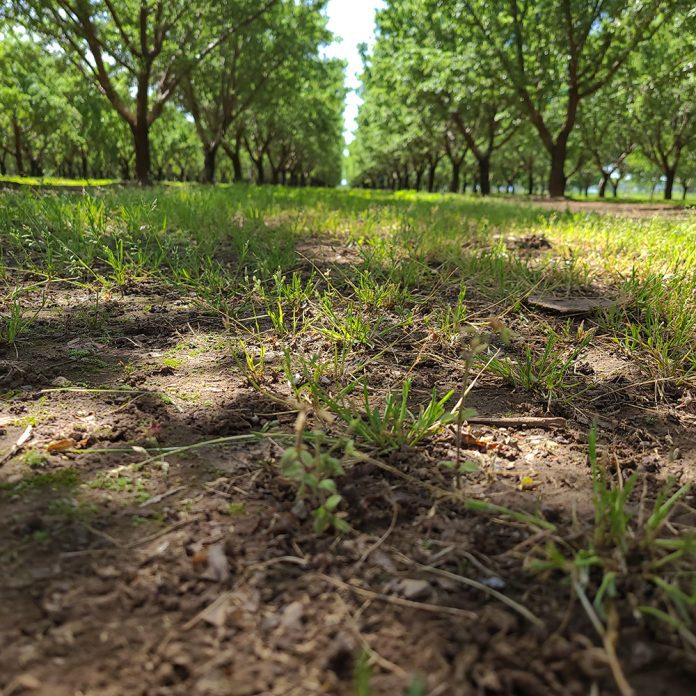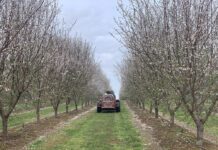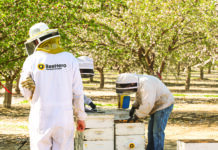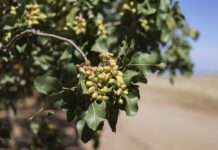
Biology is soil health. Period. Over the last 10 years, I have had multiple conversations with farmers that have used the statement, “I don’t really believe in all the biology talk.” Okay “flat earthers,” I have news for you: If you don’t believe in the importance of having a flourishing, active and balanced soil biology and its direct impact on your crop’s health, you need to do some reading this winter. Think about the biology in your gut. A flourishing active gut contains 5 pounds of biology in it. 5 pounds! That’s the same weight as your liver, and that’s a significant organ. Well, the soil is even more dynamic than that. There are, give or take, 50 billion biological organisms in a tablespoon of soil. Let that sink in. They don’t just hang out. That system has been perfected over billions of years.
Your gut is kept at a perfect 98.6 degrees F most of the time. The moisture remains fairly constant as well. There is a steady food supply being introduced all the time. It harbors the perfect environment for biology to grow. If things get out of whack, we take antibiotics to kill the bad stuff. Unfortunately, it also kills the good stuff. It takes a long time to rebalance that biology. It takes even longer if you’re not eating prebiotic and probiotic foods as well. Cultured and fermented foods will help speed that up. Taking probiotics as a supplement will speed it up as well. Your soil doesn’t have the same luxury.
Think of your soil the same way. Mother Nature wants balance. We tend to manipulate that with monocropping, long irrigation sets followed by longer dry-down periods, synthetic fertilizers, herbicides, fungicides, insecticides, tillage and soil amendments. It’s very hard to reach a balanced homeostasis with all those inputs. Full disclosure: I sell products with active biology in them. That means we brew our own products that have been proven to have beneficial responses in soil and on foliage for nutrient use efficiency. There are lots of products out there that are the byproducts of an active biological process or fermentation. They have benefits too. In my years with Ultra Gro, I have seen orchards, vineyards and row crops turned around with sufficient applications of beneficial, active biology. I have applied biology with minimal results as well because those strains of biology may have already been sufficient, while other cultures were needed for the remediation to happen. Test it and do your homework.
The relationship between soil biology and our plants is complex. Root exudates create a beneficial environment for specific biology that the plant has deemed a good fit. That biology ingests nutrients and transforms them into an available nutrient the plant can then use. Our guts are signaled the same way. The brain likes specific responses that promote the growth of certain bacteria. Too much of an anti-nutrient or specific macro and we get out of whack. The bad takes over and we get sick.
Between aerobic and anaerobic bacteria, the same thing happens in the soil. Fungal pathogens and mycorrhizae follow similar patterns. Good food and environment can enhance the proliferation of good biology. There are strains of biology that are assimilated into the plants for this same exact reason. Some biology may not transform a specific nutrient, but the immediate acidity it creates makes that nutrient more available. We have tested soil before and after foliar applications that create a root flush and increase exudate levels in the soil within days. The system is diverse, complicated and powerful. Biology makes that happen. Studies have shown native mycorrhizae creates a much larger net for nutrients to be absorbed, and a symbiotic relationship is created with the roots.
Ectomycorrhizae and endomycorrhizae live around and in roots. Studies have shown forests thrive because these superhighways in the ground allow nutrient movement between larger trees and young trees (those that can’t photosynthesize well in the shade) to keep the “babies” flourishing.
What to Do?
Now for the solution to the solutions. Test your soil. There are meters that measure the fungal to bacteria levels in your soil within 20 minutes. have hired labs to test the CO2 off-gassing of soil to measure how active biology is in the soil. There are plant pathology labs out there that will plate and test your soil to measure the actual biology present (or not). Others in our industry have contracted genomicists to map the biology in products and plants to see which are the beneficial strains and which can be detrimental. Pick a company or two you trust and start inoculating your soil with beneficial biologicals. I’ve heard rumor that we may be up to 6000 identified strains out of potentially millions.
We are just scratching the surface. You can even tailor your choices to the nutrients that match the demand curves your trees are needing. Nitrogen-fixing bacteria early in the season when N demand is high. Pseudomonas in early spring when cold, wet temperatures aren’t allowing proper phosphorus fertilization. Actinomycetes when you’re trying to get minor nutrients into the trees. Add carbon and carbohydrate solutions to feed the soil biology several times a year, not just in spring, to keep a constant supply of food in the ground. Don’t forget our trees are 95% carbon, hydrogen and oxygen. Making those three nutrients abundant and available to both biology and the trees can help make a healthy soil.
Don’t overlook your soil health. There is more than meets the eye in making every bit of that nutrition you apply work. After fungicides, insecticides and herbicides, reinoculate your soil. Use different products from different companies to keep a variety of beneficial strains active. There isn’t one company out there that has all the answers to every problem in making soil and plant biology as effective as it can be. However, inert soil will not produce optimal yields, period. Keep that soil active and you’ll have greater success in your nutrient use efficiency. Money well spent will be money well earned.















